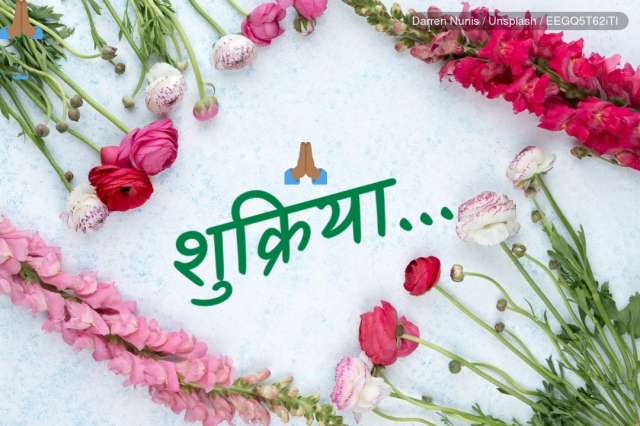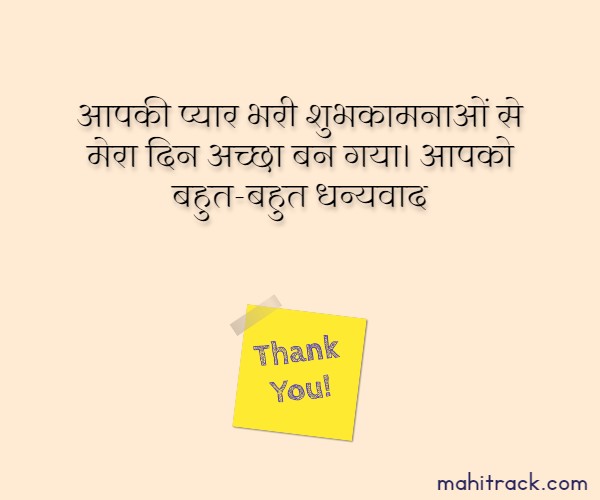
These are all-purpose greetings, covering the English ‘hello’, ‘Good morning’, ‘Goodbye’, etc. The customary Hindu greetings are ‘namaste’ or ‘namaskar’, often said with hands folded in front of the chest. Hindi consonants are divided into groups on the basis of phonetic properties of their formations: plosives, nasals, fricatives, flapped and tapped sounds, and semi vowels. Additionally, there are also many conjunct consonants. There are 33 consonants and 11 vowels in Hindi. The nearest approximations in English to these distinctions are the dental-like ‘t’ which is sometime heard in the pronunciation of the word ‘eighth’, and the retroflex-like ‘t’ in ‘true’ and the dental-like ‘d’ in ‘breadth’, and the retroflex-like ‘d’ in ‘drum’. In dental consonants the tongue touches the upper front teeth, whereas with the retroflex consonants the tip of the tongue is curled upwards against the palate, and when the tongue is released from this position it gives the Indian retroflex sound. Second contrast is between dental and retroflex consonants, for example, ta and da from t. Hindi distinguishes unaspirated ‘ka’ and ‘ta’ from aspirated ‘kha’ and ‘tha’. There are two features in Hindi characters that require special attention (as these do not occur in English): first is the contrast between aspirated and non-aspirated consonants, and the second is that between dental and retroflex consonants.Īspirated consonants are those produced with an audible expulsion of breath and non-aspirated are pronounced with minimal breath. Note that Devnagari has no capital letters. Thus each Devnagari character represents a syllable, and the totality is strictly speaking a ‘syllabary’ rather than an ‘alphabet’. The transliteration shows each consonant to end in ‘a’ : this is because in the absence of any other vowel sign, the Devnagari consonant is followed by an inherent ‘a’ sound (pronounced like the ‘a’ in ‘majority’), unless it occurs at the end of the word, when it is not pronouced, or is silenced. Therefore, it is to learn the characters of the script and the sounds of the language at the same time.Įach Devnagari character is followed by its Roman transliteration. The script is phonetic so that Hindi, unlike English, is pronounced as it is written.

Hindi is written in Devnagari or ‘Nagari’ script.

We have included some of the English language words here, which are freely used in conversations by the Hindi speakers. The language of this course is that which is used unselfconciously by Hindi speakers and writers in the various, mainly informal situations, which are introduced.

At the most colloquial level it reflects more the common ground with Urdu, while in formal and official contexts a more Sanskritized style is found. Hindi has many different styles and speech registers, appropriate in different contexts. Besides, Hindi is written in Devnagari script, while Urdu is written in a modified form of the Arabic script. However, the two languages part company at a higher level, because Urdu draws the bulk of its vocabulary from Persian and Arabic, while Hindi draws much of its vocabulary from Sanskrit. Hindi has a special relationship with Urdu: their grammar is virtually identical, and they have a substantial vocabulary in common. The homeland of Hindi is in the North of India, but it is studied, taught, spoken and understood widely throughout the sub-continent, whether as mother tongue or as a second or a third language. ‘National’ should be understood as meaning the ‘official’ or ‘link’ language.

Hindi is the national language of India but, it is one of several languages spoken in different parts of the sub-continent.


 0 kommentar(er)
0 kommentar(er)
